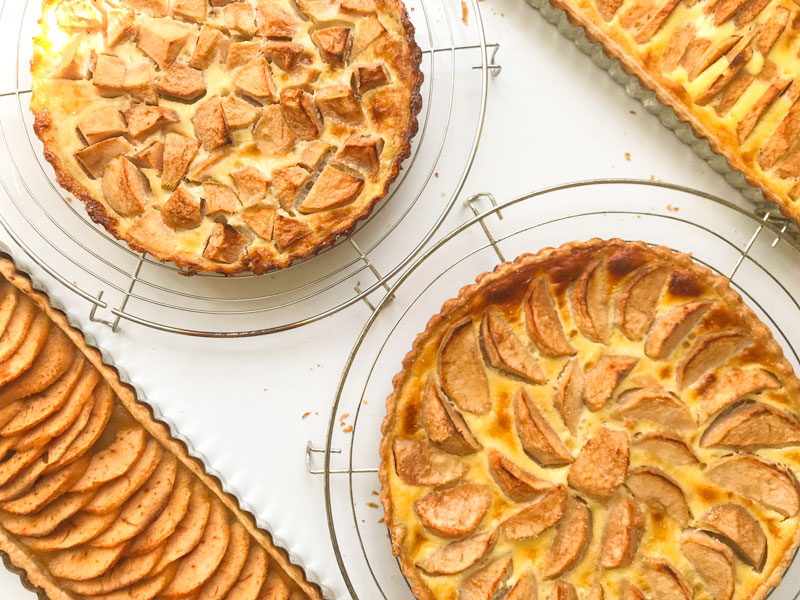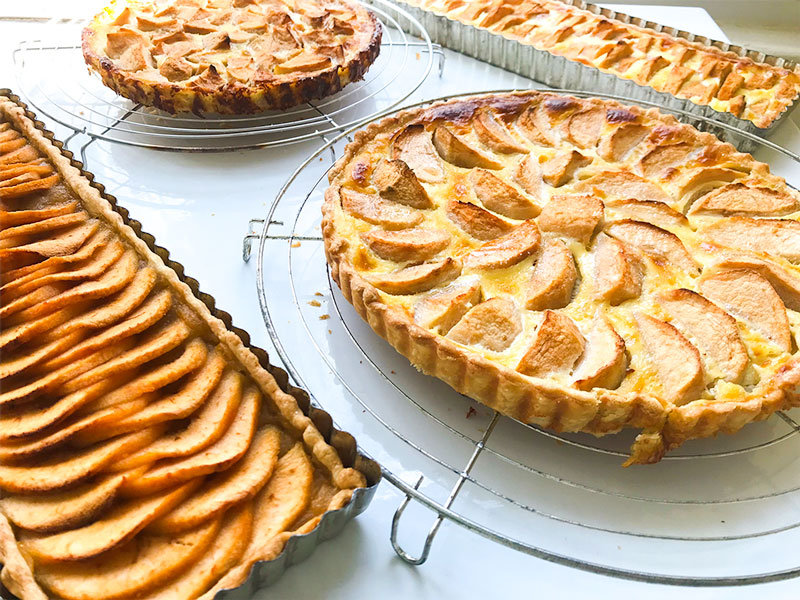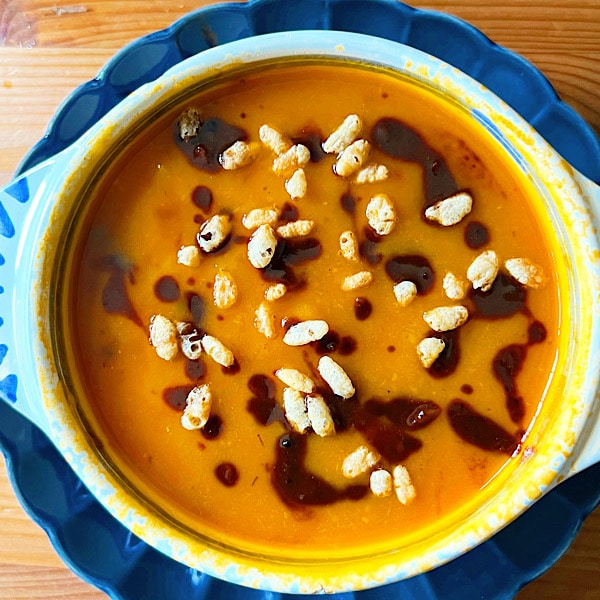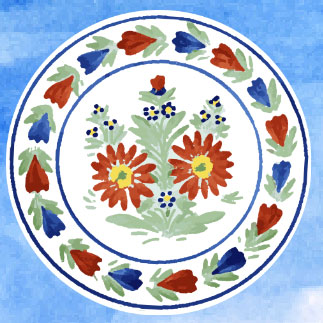
The French apple tart most people have heard of is la tarte Tatin, a caramelized upside-down creation that is the stuff of culinary legend. Less attention is paid to la tarte normande, an apple tart with a creamy custard base. A tarte normande doesn’t have the pretty presentation or the culinary pedigree of a tarte tatin (which has been lauded by gastronomes since the late nineteenth century). It’s more of a homey, comforting dessert (even Alain Ducasse’s version looks a little rustic), lightly sweet, wonderfully satisfying, inexpensive to make and…DEAD EASY.
On a recent weekend morning when I had a glut of free apples, I decided to play around with my tarte normande recipe. I flavored the custard with calvados (apple brandy), vanilla, and nothing at all (this requires very good eggs, dairy, and even a high-quality sugar, but it can be excellent). I cut the apples into cubes and both thin and thick slices, spaced out the apple pieces over the crust and packed them in tightly. I glazed a couple with jam, sprinkled some with turbinado sugar, and left one plain. What I ultimately discovered is that there is no ‘one’ way to make it that is better than the others. That means I don’t have to feel bad when I throw one together with odd-shaped apple pieces (I just call it a ‘farmhouse’ tarte normande)…but I can also arrange the apples with pastry-chef precision if I feel like it.
As to the crust…I use the basic butter dough of my pastry school days, but any crust will do…even sweet dough, puff pastry, or good-ol’ store-bought.

Apple Tarte Normande
CRUST
1 ¼ cups (160 g.) all-purpose flour
1/3 cup (80 g.) cold butter, cut into small pieces
1 tsp. sugar
pinch of salt
1 egg yolk
cold water
CUSTARD
2 eggs
3 to 4 Tbs./45 to 60 g. sugar
pinch of salt
1/3 cup/75 ml. heavy cream or crème fraiche or a combination
¾ cup/175 ml. milk, preferably whole
½ tsp. vanilla extract, optional
1 to 2 Tbs. calvados (apple brandy), optional
APPLES AND GARNISH
2 to 4 apples firm, ‘pie’ apples, such as Winesap, Northern Spy, Granny Smith, or Braeburn
apricot jam or apple jelly, turbinado sugar, toasted almonds for garnish, optional
TO MAKE THE CRUST: Place the flour, butter, sugar, and salt in the bowl of a food processor, and pulse until the mixture resembles coarse meal. Place the egg yolk in a cup measure, and top off with enough very cold water to have 1/3 cup (80 ml.) liquid. (Note: You can also just use 1/3 cup water without the egg yolk. Add the liquid to the flour mixture, and pulse in the food processor just until a dough forms. Shape the dough into a round disk, wrap in plastic wrap, and chill 1 hour, overnight, or up to 3 days.
PREHEAT the oven to 400˚F/200˚C. Coat a 9 or 10-inch fluted tart pan with a removable bottom or other pie dish with melted butter or cooking spray.
ROLL OUT the crust dough into an 11 or 13-inch circle. Press the dough round into the prepared pan, and trim the edges. Place the tart pan on a baking sheet, and return it to the refrigerator while preparing the custard and fruit.
TO MAKE THE CUSTARD: Whisk together the eggs, sugar, and salt until smooth. Whisk in the heavy cream, then the milk and the optional vanilla and/or calvados. Set aside.
PEEL, CORE, AND CUT the apples into cubes or slices at the last minute to keep from browning. Scatter or arrange the apple pieces over the bottom of the tart crust, return the pan to the baking sheet, and pour the custard over the apples in the crust so the crust is 2/3 full. (You may have some custard leftover if you’ve used a lot of apples.)
BAKE the tart 15 minutes at 400˚F/200˚C. Reduce the oven heat to 350˚F/180˚C, and bake 15 to 20 minutes more, or until the crust is golden brown and the custard is set. Cool the tart on a wire rack.
To unmold the tart from a fluted tart pan: run a knife or think metal spatula around the edges to make sure none of the custard has bubbled over and stuck during baking. Carefully lift the tart out of the pan, then slide off the bottom. (You should unmold the tart as soon as it is cool so that the crust doesn’t get soggy.)


[…] Apple Tarte Normande […]